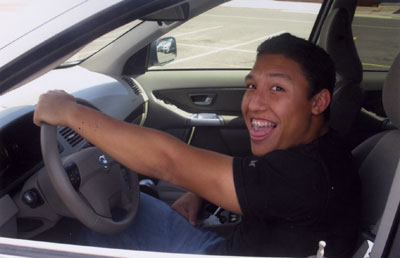All Nonfiction
- Bullying
- Books
- Academic
- Author Interviews
- Celebrity interviews
- College Articles
- College Essays
- Educator of the Year
- Heroes
- Interviews
- Memoir
- Personal Experience
- Sports
- Travel & Culture
All Opinions
- Bullying
- Current Events / Politics
- Discrimination
- Drugs / Alcohol / Smoking
- Entertainment / Celebrities
- Environment
- Love / Relationships
- Movies / Music / TV
- Pop Culture / Trends
- School / College
- Social Issues / Civics
- Spirituality / Religion
- Sports / Hobbies
All Hot Topics
- Bullying
- Community Service
- Environment
- Health
- Letters to the Editor
- Pride & Prejudice
- What Matters
- Back
Summer Guide
- Program Links
- Program Reviews
- Back
College Guide
- College Links
- College Reviews
- College Essays
- College Articles
- Back
Please Be Patient! Promoting Safety for Seniors on the Road
One accident is all it takes to ruin lives. While many senior citizens need and want to drive to have mobility and freedom, they may face particularly challenging situations on the road. Although senior drivers may not be the face of dangerous drivers, all drivers should be more cautious of them, as they may be experiencing physical challenges and tend to be more fragile than any other age group.
For many seniors, their only means of transportation is driving. Whether it be to the grocery store, to their grandkids, or to their great grandkids, seniors have important places to be. In 2017, 40 million people over the age of 65 owned a driving license in America.[i] Seniors enjoy their driving privilege, too. In 2001, people aged 65 and older chose cars as their favored mode of transportation.[ii] Additionally, senior drivers make up one of the safest driving demographics. They are more likely to wear a seatbelt, avoid driving impaired, and obey speed limits.[iii] So, what’s the problem?
Senior drivers tend to be especially vulnerable in car accidents. Seniors 65 and older experience 17% higher car-related fatality rates than those ages 25 to 64.[iv] They are also more likely to be injured in car crashes. In 2016, more than 290,000 seniors were treated in the emergency room for injuries from car accidents.[v]
One preventable reason: aggressive driving by other drivers. According to the National Highway Traffic Safety Association, 60% of drivers admitted that slow drivers make them impatient.[vi] Senior drivers, who tend to not speed, can be a prime target of this impatience. Impatience breeds frustration and frustration breeds aggressive driving. Aggressive driving, which includes speeding,[vii] creates extremely dangerous situations for both the driver and the people around them. In fact, aggressive driving is the fourth most frequent cause of car accidents, after drunk driving, speeding, and distracted driving.[viii]
Our driving community can protect senior drivers by being patient. Seniors may need more time to respond to traffic situations, as they may have physical challenges that affect their driving such as weaker muscles, arthritis, and less joint flexibility that arise with age.[ix] Seniors may also have reduced peripheral vision, require more light to see things, and declined hearing.[x] This is why all drivers should understand what these seniors are experiencing and try to exercise patience. Patience may make the difference between crashing into a car and not. So if you encounter a slow senior driver, keep in mind that they may be experiencing more than the eye meets, and that you could eventually be in their shoes.
Potential senior drivers may also increase, warranting even more caution from the driving community. The senior population is expected to rise from 15% to 24% by 2060, doubling from 46 million to over 96 million.[xi] In addition, according to AAA, seniors outlive “their ability to drive safely” by 7 to 10 years,[xii] making it crucial that drivers be aware of them.
A possible solution to this injustice is to create awareness by incorporating additional materials in driver’s education curriculum about protecting seniors. This method may be effective, as studies have revealed that educating teenagers on the dangers of using social media while driving has generally lead them to reduce their social media use while driving.[xiii] The DMV in each state can make these additions to the curriculum.
Additionally, seniors may be offered free bumper stickers to encourage other drivers to be conscientious of them. These can be funded by insurance companies and organizations such as AAA. This may be successful because stickers with the message “Drive In The Moment” had a positive effect on reducing phone use in young adults, such as sending and reading text messages.[xiv]
Another solution is to encourage all drivers to periodically take driving courses. Currently, some senior citizens take mature driving courses for people ages 55 and over.[xv] If they complete the course, they get a discount on their insurance premium.[xvi] In the same way, drivers in other age groups may take online courses costing about $20 or less every 3 years or so to remind them about safe driving and receive discount on insurance. The Department of Transportation can mandate insurance companies to give discounts to participants.
Such initiatives may sow the seeds to a safer and more understanding environment for senior drivers in the future. One accident is all it takes to ruin lives; a change in mindset can save them. So remember: please be patient!

Similar Articles
JOIN THE DISCUSSION
This article has 0 comments.
